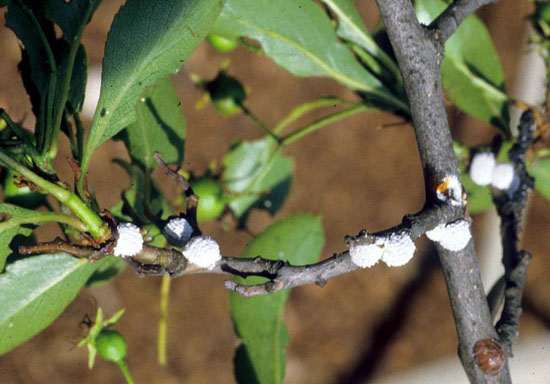Issue 6, May 28, 2010
Hawthorn Mealybug
Hawthorn mealybug is being found in high numbers on cotoneaster in northeastern Illinois. Hawthorn mealybug, Phenacoccus dearnessi, is also known as two-circuli mealybug. It feeds on hawthorn, cotoneaster, pyracantha, mountain ash, amelanchier, and other rose family plants.
This mealybug is globular and red, but is covered with white wax so that the red does not show unless the wax is removed. Older nymphs overwinter in cracks in the bark. In the spring, the females move to twigs, being numerous on the undersides. They become fully grown in late May to June. At the same time, the male nymphs that stayed in the bark crevices molt into winged adults. Mating occurs, and the females retain their fertilized eggs which hatch into crawlers which then emerge from their mothers.

These nymphs crawl onto the leaves to feed. In late summer, large numbers of nymphs form aggregations in leaf folds. They move to bark crevices to overwinter in September and October.
Eggs and crawlers have not yet been produced, but control can still be obtained with systemic insecticides such as imidacloprid (Merit, Xytech, Pointer, Imicide) or dinotefuran (Safari). Trees can be trunk injected and both trees and shrubs can be treated through soil injection. Sprays should also be effective, including imidacloprid, acephate (Orthene), and labeled pyrethroids. Be watchful for crawlers, control will be more effective then.--Phil Nixon and Jim Fizzell
Author:
Phil Nixon